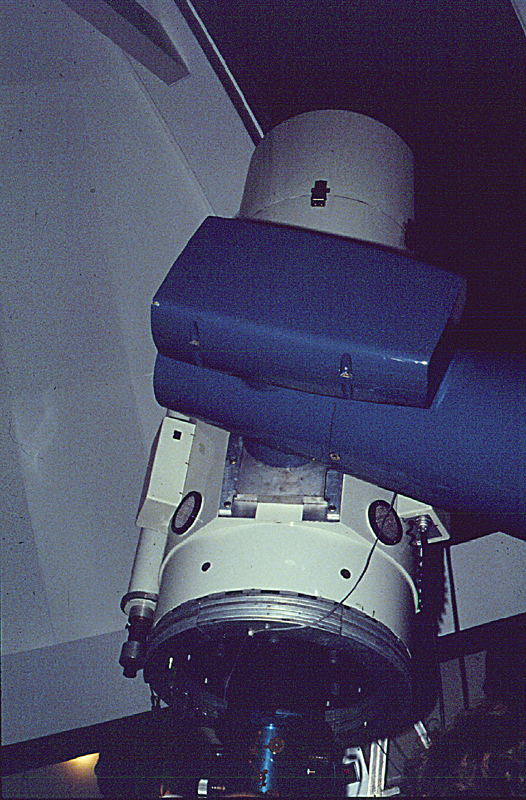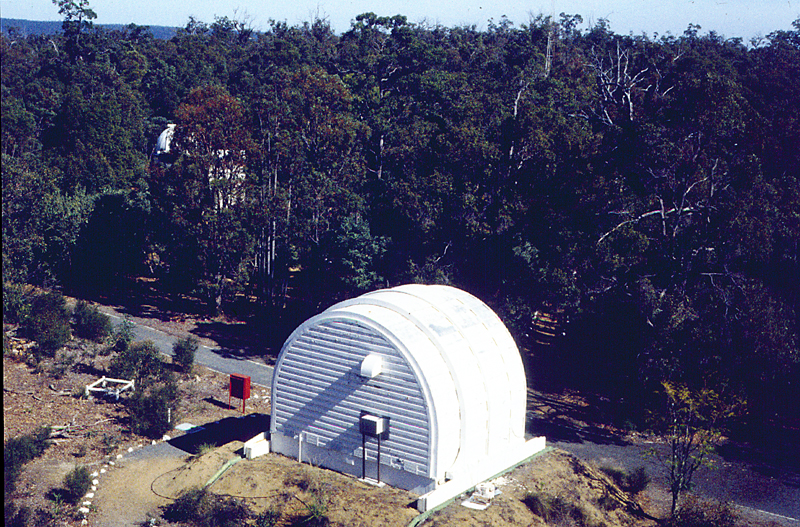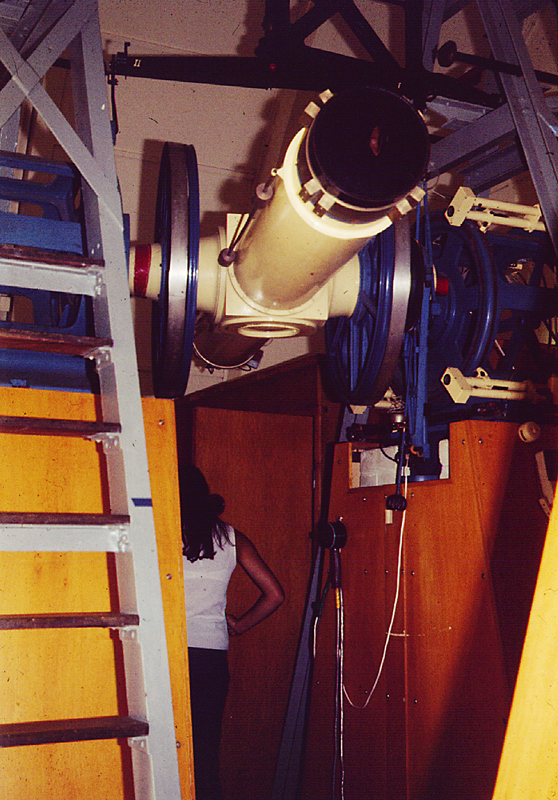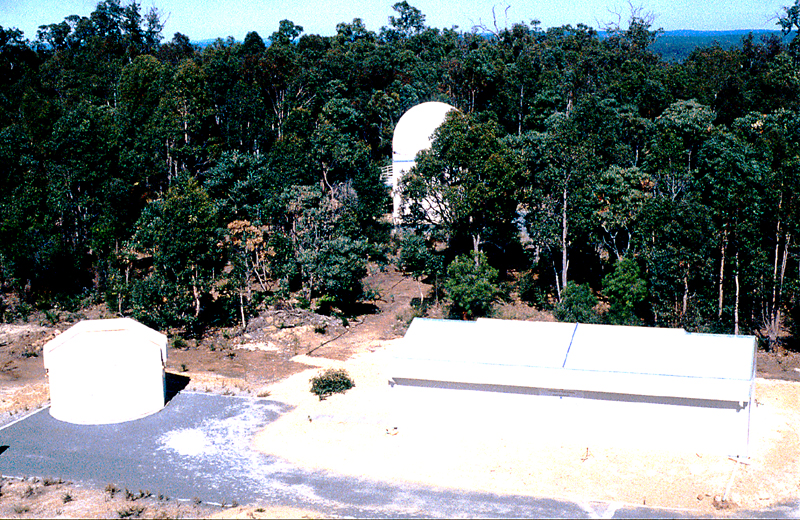
In 2001, I visited the USA to attend a conference on Tucson. During the conference, a side trip was arranged to visit the Steward Observatory, located in the Santa Catalina Mountains behind Tucson. The observatory is home to the 61" Kuiper telecope and the Catalina Sky Survey telescope amongst others.

The main instrument at the observatory is the Lowell telescope. This was installed in 1971 as part of the NASA Planetary Patrol program that ran during the 1970's in support of the early planetary missions. The telescope is housed atop a 20 metre tower to minimise atmospheric turbulance.
The telescope is a Boller and Chivens 24" cassegrain, with secondary mirrors giving either f/13 or f/75. During the planetary patrol days, the f/75 secondary was most used. However since that program ceased, the f/13 secondary is almost always used to obtain a better field of view.

A photoelectric photometer was added during the late 1970's and then in the mid-1990's a locally made, liquid nitrogen cooled CCD was added. Also in the mid-1990's the telescope was automated for a supernova search program. Part of my honours research was to calibrate the CCD for photometry. It was this project that aroused my interest in CCD photometry.
The telescope actually belongs to the Lowell Observatory in Arizona, but is on semi-permanent loan to the Perth Observatory. The two institutions have developed close relations over the years with many observers from both institutions visiting the other facility. An example of the results of this colaberation was the co-discovery of the rings of Uranus in 1977. A team of Perth-Lowell observers was using this telescope to observe the occultation of a star by Uranus and their results clearly showed several of the occultations of the star by the rings.

This strange looking building is the old transit telescope dome. Originally the observatory was in charge of timekeeping for the state, and the transit telescope was used to keep track of the time. After this function was discontinued, the transit telecope was used in compiling catalogues of extremely precise positions of stars. During the 1970's a considerable amount of work was done with the instrument for the FK3 and FK4 catalogues. In the 1980's the transit method was superseeded by other methods for obtaining percise positions and the transit telescope was retired. The last time I was at the observatory, the dome was home to a 10" telescope with and ST8 CCD that was being used as a test instrument in robotic observation.

The original transit telescope was a 3" refractor. This was later replaced with the 8" telescope shown here. Today this instrument is on display in the main entrance foyer of the administration building.
One of the original telescopes installed at the observatory was a 13" astrograph. This telescope is a 13" f/15 photographic refractor with a 10" visual refractor as a guidescope. Until the 24" telescope was installed, this was the main instrument for scientific use. It was first used to obtain photographic plates for the Astrographic Catalog project of the early 1900's. It has been used extensively for photographic studies of comets and asteroids, and in more recent times, many of the regions photographed for the Astrographic Catalog have been retaken for proper motion studies, since nearly 100 years have passed between the photographs.

In this photograph, the astrographic building is visible in the background amongst the trees. In the foreground is the new Visitor's Observing facility. The octagonal building on the left houses a 14" celestron. This dome is unusual in the the entire building rotates, rather than just the roof. This means that the door can be in any position, depending on where you are observing. After spending several hours observing with this telescope, it can be somewhat disorienting to step outside and not be sure where you are!!!
The building on the right has a roll-off roof, and houses an 11" celestron and the other original telescope installed at the observatory, the 12.5" Calver newtonian. Although over 100 years old, this telescope still provides excellent images and has a very accurate drive. For several years during the 1970's and 1980's, this telescope was on loan the the Astronomical Society of Western Australia. I had considerable enjoyment using this telescope for visual and photographic observation during this time.
Since this photograph was taken, another telescope and dome has been installed in this facility. This is a 16" Meade LX200 that was purchased as part of the observatory centenary in 1996. It is situated just to the left of the rool-off roof building, where the small patch of bush is. All of these instruments are for the use of the general public, and sometimes for students from the city universities.